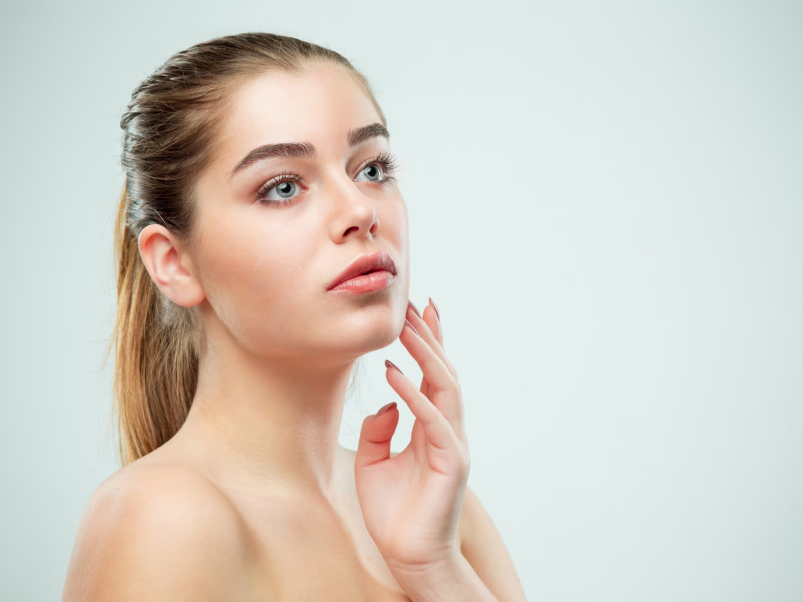In today’s world of cosmetic dermatology, chemical peels have become one of the most effective and accessible treatments for improving skin tone, texture, and overall brightness. Designed to exfoliate the outer layers of the skin, chemical peels help eliminate pigmentation, sun damage, and uneven patches, revealing a fresh, radiant complexion underneath. With growing interest in aesthetic solutions, skin whitening in Dubai(علاج تبييض البشرة في دبي) has seen a significant rise in demand for advanced chemical peels that deliver fast, safe, and visible results.
Understanding the true benefits and limitations of this treatment is essential before deciding if it’s the right approach for your skin goals. Below is a comprehensive look at the pros and cons of chemical peels specifically for skin whitening purposes.

What Are Chemical Peels?:
Chemical peels are dermatological treatments that involve applying a specially formulated acidic solution to the skin. This solution causes controlled exfoliation of the skin’s upper layers, encouraging cell turnover and the removal of pigmented, damaged, or dull skin cells.
Types of peels by depth:
-
Superficial Peels: Use mild acids like glycolic or lactic acid, suitable for regular maintenance and minor discoloration
-
Medium Peels: Often involve trichloroacetic acid (TCA) to penetrate deeper layers, effective for moderate pigmentation and melasma
-
Deep Peels: Use stronger agents like phenol; not commonly used due to high downtime and risk, but can dramatically improve severe sun damage or deep melasma
The choice of peel depends on your skin tone, type, sensitivity, and pigmentation severity.
Pros of Chemical Peels for Skin Whitening:
When performed by professionals, chemical peels can be transformative. They are designed to enhance skin clarity and brightness with both immediate and long-term benefits.
1. Effective Pigmentation Reduction:
Chemical peels help fade dark spots, acne marks, sunspots, and melasma by accelerating the removal of melanin-rich skin cells.
Key outcomes:
-
Brighter, more even skin tone
-
Improved light reflection on the skin’s surface
-
Visible difference in 2–4 sessions for mild pigmentation
2. Non-Invasive and Safe:
Unlike surgical procedures, peels are non-invasive and can be performed in under an hour with minimal discomfort.
Benefits include:
-
No incisions or anesthesia required
-
Quick in-clinic treatments
-
Generally well-tolerated when administered professionally
3. Enhances Skin Texture:
Peels don’t just target pigment—they also improve overall skin health by removing dead skin cells and unclogging pores.
Visible improvements:
-
Smoother skin surface
-
Reduced roughness and flakiness
-
Fewer breakouts and minimized pores
4. Suitable for Most Skin Types:
Mild and medium peels can be customized for various skin tones, especially when performed in medically advanced environments like clinics offering skin whitening in Dubai.
Flexible application:
-
Customized acid concentrations based on skin sensitivity
-
Gentle acids like mandelic or lactic acid are great for sensitive skin
-
Can be paired with brightening agents like kojic acid or arbutin for enhanced results
5. Short Downtime with Gradual Results:
While deep peels require recovery time, superficial and medium peels usually allow clients to resume normal activities quickly.
Post-treatment expectations:
-
Light peeling or flaking for 3–7 days
-
Gradual fading of pigmentation with each session
-
Best results achieved with consistent maintenance
Cons of Chemical Peels for Skin Whitening:
Despite their advantages, chemical peels may not be ideal for everyone. It’s important to consider potential drawbacks and limitations before committing to treatment.
1. Temporary Side Effects:
Mild irritation is common after peels, especially for first-timers or individuals with sensitive skin.
Possible reactions:
-
Redness and tightness for 1–3 days
-
Dryness, peeling, or light scabbing
-
Slight stinging or burning sensation during application
These effects are typically short-lived but can be bothersome without proper aftercare.
2. Multiple Sessions May Be Needed:
Chemical peels are rarely a one-time solution for pigmentation. Most clients require a series of treatments to see visible whitening effects.
Typical regimen:
-
4–6 sessions spaced 2–3 weeks apart
-
Maintenance peels every 2–3 months
-
Full results seen over several weeks, not instantly
3. Not Suitable for All Skin Conditions:
Certain skin issues may limit your eligibility for chemical peels. Active infections, eczema, or very dark skin tones may need alternative treatments to avoid complications.
Conditions requiring caution:
-
Active acne or rosacea flare-ups
-
Cold sores or herpes outbreaks
-
History of keloid scarring
-
Fitzpatrick skin types V–VI with unmonitored care
A pre-treatment consultation is essential to ensure safe and effective application.
4. Risk of Post-Inflammatory Hyperpigmentation (PIH):
In some cases, especially with medium to deep peels, there is a chance of triggering additional pigmentation due to skin sensitivity or incorrect aftercare.
PIH risks may arise from:
-
Sun exposure after treatment
-
Aggressive exfoliation or picking at flaking skin
-
Poor-quality peels or inexperienced application
This makes professional guidance and post-care compliance extremely important.
What to Expect During the Procedure:
Knowing what happens in a session helps ease anxiety and prepares you for optimal results.
Procedure steps:
-
Skin is thoroughly cleansed
-
A prepping solution is applied to remove oil
-
The chemical peel is applied in layers, monitored closely
-
You may feel mild tingling or heat
-
Neutralizing agent or cold compress is used post-treatment
The entire process usually takes between 30 to 60 minutes.
Aftercare Tips for Optimal Results:
Proper post-treatment care is essential for healing and maximizing the whitening effect of your peel.
Essential aftercare practices:
-
Apply a broad-spectrum SPF daily
-
Avoid direct sun for at least 7–10 days
-
Use only dermatologist-approved moisturizers and cleansers
-
Do not pick or peel off flaking skin
-
Avoid makeup for 24–48 hours
Hydration and gentle care go a long way in ensuring your skin bounces back stronger and brighter.
Who Should Perform Your Chemical Peel?:
A trained professional should always administer chemical peels. Clinics offering expert services for skin whitening(علاج تبييض البشرة) often staff dermatologists or licensed aestheticians who tailor treatments to your unique skin profile.
What to look for in a provider:
-
Board certification and dermatological experience
-
Use of medical-grade products
-
Clear explanation of risks, steps, and outcomes
-
Clean, safe, and accredited treatment facility
Choosing the right clinic is as important as the treatment itself.
Combining Chemical Peels with Other Treatments:
For those seeking a holistic whitening approach, chemical peels can be paired with complementary treatments for more dramatic results.
Popular combination strategies:
-
Peels + Glutathione injections for internal and external glow
-
Peels + Laser therapy for deep and surface pigmentation
-
Peels + LED light therapy to calm skin post-procedure
These methods work synergistically, enhancing your results while addressing multiple skin concerns simultaneously.
Conclusion:
Chemical peels remain a powerful option for individuals looking to improve skin tone and reduce pigmentation through a safe, non-invasive procedure. When used correctly, they offer a balanced mix of exfoliation, rejuvenation, and skin brightening—making them ideal for people wanting radiant results with minimal downtime. The advanced medical skincare landscape, especially in places known for aesthetic excellence like skin whitening in Dubai, continues to raise the bar for safe and effective chemical peel applications.
By weighing the pros and cons, consulting a qualified expert, and maintaining proper aftercare, you can enjoy lasting clarity and confidence in your skin.




